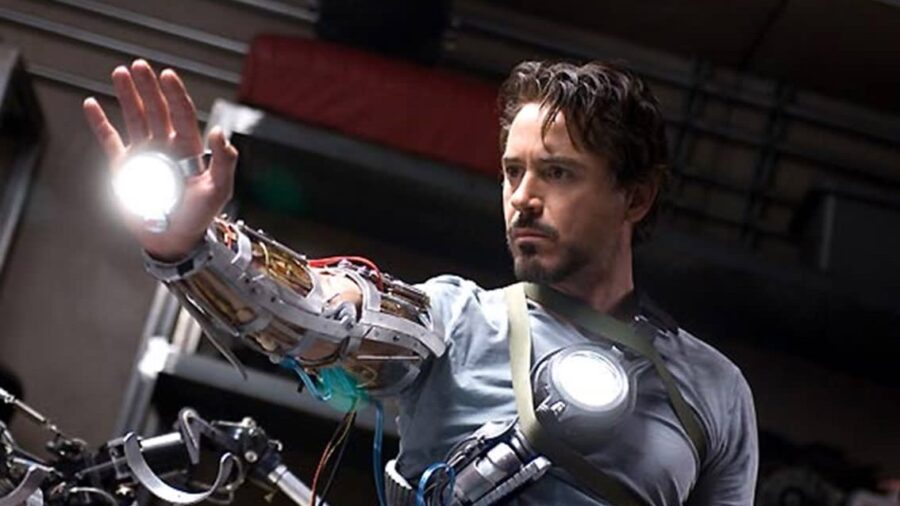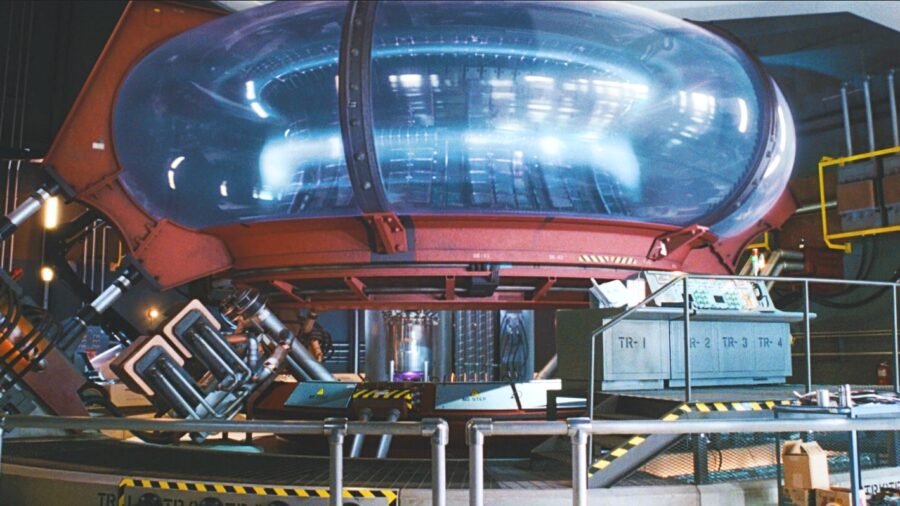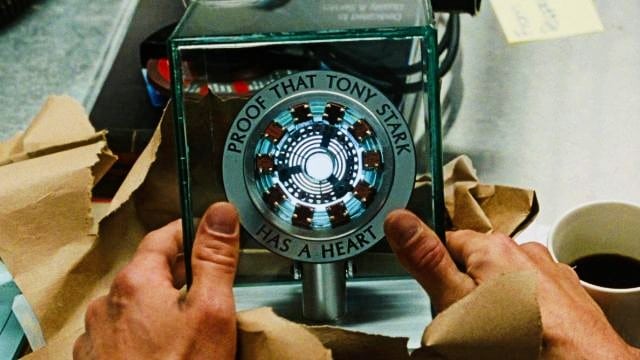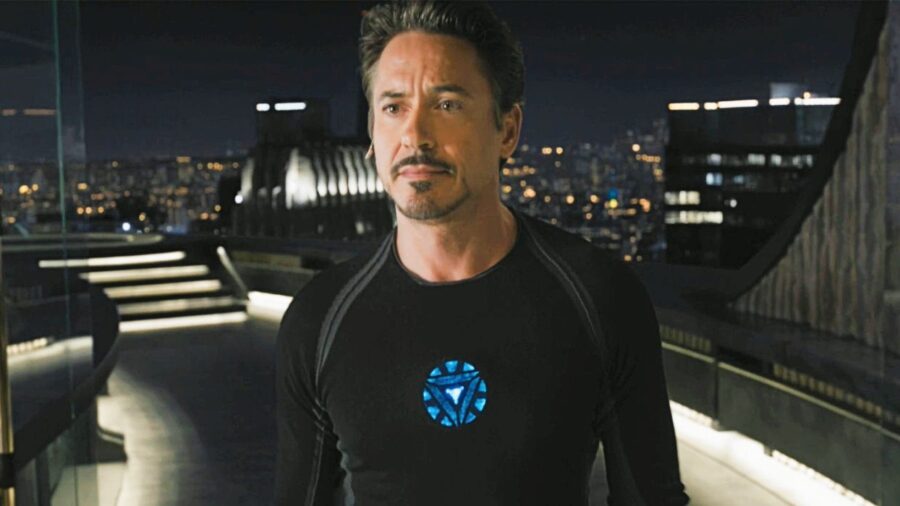How Does Iron Man’s Arc Reactor Work?
Iron Man's Arc Reactor is the source of his power and we're breaking down how it works.

The Arc Reactor is the key to Iron Man, saving Tony Stark‘s life more than once and running not only his suits but also the Avengers Tower. It’s also essentially the MacGuffin of the first Iron Man film. But what is an Arc Reactor and how does it work?
The Arc reactor existed well before Iron Man did, as it was created by Tony Stark’s father, Howard Stark, founder of Stark Industries. It is, essentially, a fusion reactor that uses a palladium core to produce enormous amounts of energy. The elder Stark’s very large version originally powered the entire Stark Industries complex, making the enormous facility self-sustaining.

But the Arc Reactor Iron Man uses is quite a bit different, most notably because it is much, much smaller. The lightweight device fits in the palm of the hand—and the center of Tony Stark’s (Robert Downey Jr.) chest, where it prevents shrapnel from a Stark missile from entering Tony’s heart, while also powering his suit. It was able to be made so small in part because Tony is an engineering genius who knows his father’s work intimately and in part because it has much less to power than an entire research and manufacturing complex.
As Tony Stark’s cave companion and ad-hoc co-engineer Ho Yinsen remarks of the Arc Reactor in Iron Man, it can keep Tony’s heart running for “50 lifetimes.” Or, Stark replies, “something big for 15 minutes,” indicating that the power output of the miniature version is much less than that of the massive original. One moment in the film shows Tony tossing away a much larger device for one tiny piece of metal, which is presumably the palladium needed to fuel the reactor, showing that the source material itself is minuscule.

But the first Arc Reactor, while a leap forward in technology, can’t sustain Iron Man’s new Mark II suit to Tony’s specifications, so he devises a new, more efficient reactor. He then asks Pepper Potts (Gwyneth Paltrow) to rather awkwardly perform an impromptu surgery to install the new device in his chest. Thankfully, this rather clumsy process provides Stark with an upgrade and, as an added bonus, does not kill him.
Known as the Palladium Arc Reactor Mark II, the more advanced device provides power for his Mark II Iron Man suit and continues to keep Tony from entering cardiac arrest. The Mark III reactor is introduced in the third film, though the drawback to all the palladium-based reactors is that Tony’s body is being slowly poisoned by the palladium. This sets him on a mission to find and synthesize an element discovered by his late father that will provide clean energy without the toxic effects.
When he succeeds in his quest, Tony creates a new Arc Reactor and Iron Man once again escapes death at the hands of his own life-saving technology. Eventually, he has surgery to remove the shrapnel from his chest so that he is no longer dependent on the reactor to stay alive. But the reactor still provides power for his fleet of suits.

But the Arc Reactor is more than just Iron Man’s sci-fi super suit charger. It’s based on some real science that, while still experimental, could make something like the reactor possible in the future. Nuclear fusion is already a reality in a research setting, colliding isotopes together to create energy, rather than the more dangerous splitting of atoms used in the nuclear fission of today’s nuclear weapons and power plants.
As Gizmodo theorized, the Arc Reactor Iron Man uses relies on the often-proposed but generally-discredited idea of using palladium as a source for “cold” fusion, but some of its properties could theoretically have been used by the elder Stark to create a reaction. The ring of electromagnets that encircle the core keeps charged particles moving at great velocity, which are ejected from the device’s core. This creates an electrical cell that can generate massive amounts of energy.

The Arc Reactor would have to be quite advanced to power Iron Man, let alone the entire Stark Industries complex, but it relies on a bridge between real science and fantasy that is only a few steps outside our current technological capabilities. It therefore stands as a great piece of aspirational sci-fi technology that lives in the tradition of fictional universes like Star Trek, using science and imagination to inspire future innovation. In this case, a clean source of renewable energy that could power cities is definitely something worth working toward.












